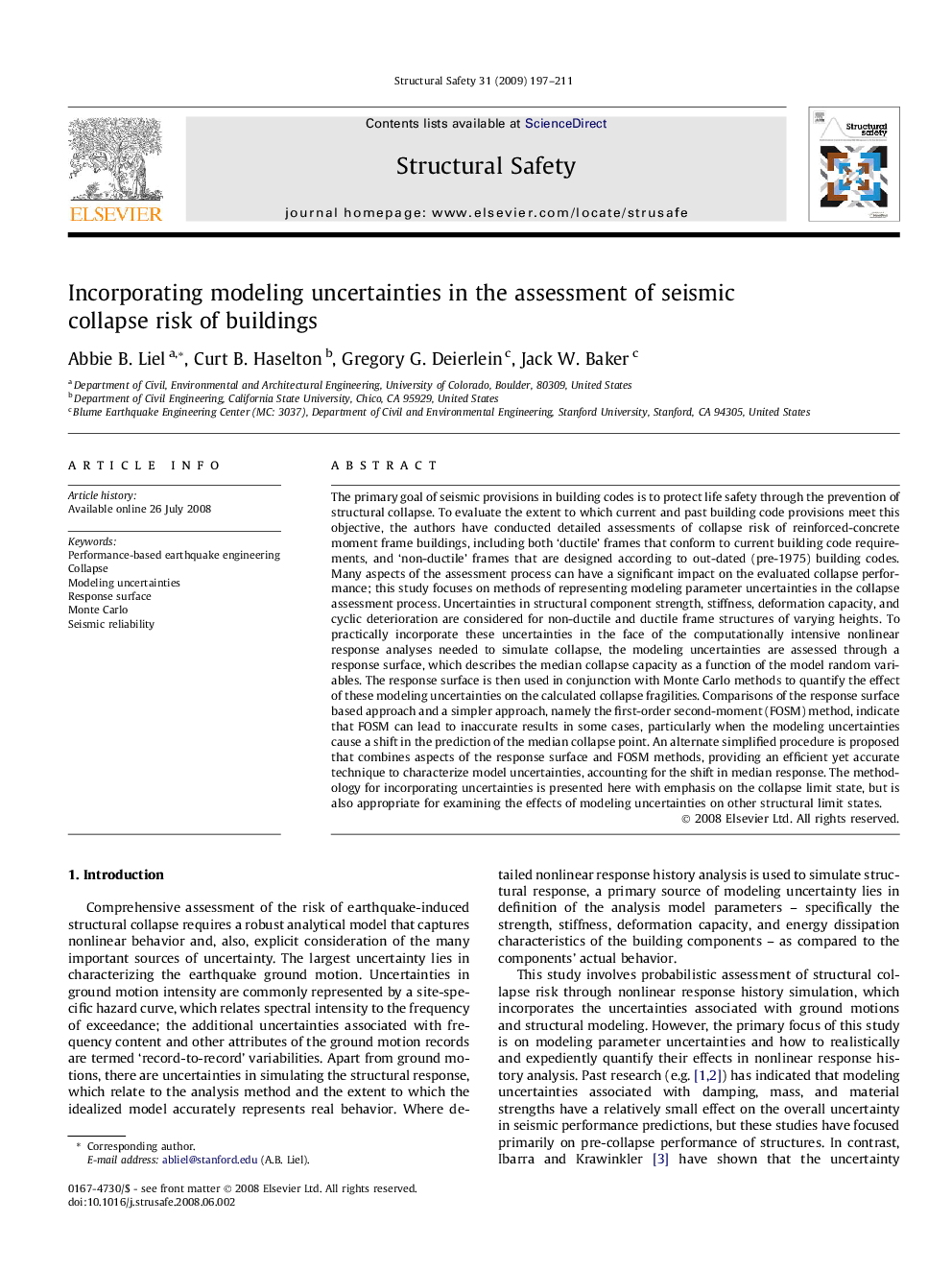| Article ID | Journal | Published Year | Pages | File Type |
|---|---|---|---|---|
| 307816 | Structural Safety | 2009 | 15 Pages |
The primary goal of seismic provisions in building codes is to protect life safety through the prevention of structural collapse. To evaluate the extent to which current and past building code provisions meet this objective, the authors have conducted detailed assessments of collapse risk of reinforced-concrete moment frame buildings, including both ‘ductile’ frames that conform to current building code requirements, and ‘non-ductile’ frames that are designed according to out-dated (pre-1975) building codes. Many aspects of the assessment process can have a significant impact on the evaluated collapse performance; this study focuses on methods of representing modeling parameter uncertainties in the collapse assessment process. Uncertainties in structural component strength, stiffness, deformation capacity, and cyclic deterioration are considered for non-ductile and ductile frame structures of varying heights. To practically incorporate these uncertainties in the face of the computationally intensive nonlinear response analyses needed to simulate collapse, the modeling uncertainties are assessed through a response surface, which describes the median collapse capacity as a function of the model random variables. The response surface is then used in conjunction with Monte Carlo methods to quantify the effect of these modeling uncertainties on the calculated collapse fragilities. Comparisons of the response surface based approach and a simpler approach, namely the first-order second-moment (FOSM) method, indicate that FOSM can lead to inaccurate results in some cases, particularly when the modeling uncertainties cause a shift in the prediction of the median collapse point. An alternate simplified procedure is proposed that combines aspects of the response surface and FOSM methods, providing an efficient yet accurate technique to characterize model uncertainties, accounting for the shift in median response. The methodology for incorporating uncertainties is presented here with emphasis on the collapse limit state, but is also appropriate for examining the effects of modeling uncertainties on other structural limit states.
